Top Game Analytics Tools for Enhancing Player Experience
“With data collection, ‘the sooner, the better is always the best answer.’" — Marissa Mayer
When it comes to mobile gaming, this couldn’t ring more true. The sooner you start understanding how players interact with your game, the sooner you can fine-tune it for better engagement, retention, and revenue. After all, the mobile gaming industry is on track to generate an incredible USD 181.94 billion by 2030. With that kind of growth, there’s no room for guesswork.
Where thousands of new games are launched each year, staying competitive means being able to make data-driven decisions from day one. With game analytics tools, you can dig deeper into player behavior, uncover trends, and adapt quickly to changes.
These tools attract the right users, boost retention, optimize monetization, and enhance the overall player experience. Tools like Segwise help you understand user segments deeply, enabling smarter, more impactful decisions.
In this article, we'll look into the top 5 game analytics tools to help you unlock those insights and take your game to the next level. So let’s get started!
What are Game Analytics Tools?
Game analytics tools are key to understanding how players interact with your game. They help you track everything, from how long players spend in the game to which features they love or avoid.
With game analytics data, you can collect valuable data such as:
Player retention: How often players return to the game after their first session.
In-app purchases: Spending patterns and transaction details.
Churn rate: The rate at which players stop playing the game.
Drop-off points: Where players quit or lose interest in the game.
Engagement metrics: Frequency of play, session frequency, and active time spent.
Player demographics: Information on player age, location, and preferences.
Monetization data: Insights into ad views, in-game purchases, and overall revenue performance.
With this wealth of data, you can fine-tune your monetization strategies, optimize campaigns, and uncover the most effective revenue-generating methods.
Key Features of Game Analytics Tools
Player Behavior Tracking: You can track and record detailed actions players take within your game, such as their movements, interactions, and item usage. This lets you understand precisely how players engage with your game and where they spend their time.
User Retention Metrics: You can collect data on how often and how long players return to your game, tracking retention over key timeframes (like Day 1, Day 7, Day 30). This helps you identify patterns in player loyalty and discover areas where you can improve.
Monetization Tracking: These tools let you monitor in-app purchases, ad interactions, and virtual currency transactions. You’ll gain insights into how players spend money and which monetization strategies work best.
A/B Testing Tools: You can experiment with different game elements, such as UI designs, feature variations, or ad placements, by testing multiple versions and seeing which one performs better with your players, all in real time.
Player Segmentation: You can segment your players based on their behavior, demographics, or in-game activity. This helps you tailor your analyses and create personalized content or offers for specific groups of players.
These features form the backbone of creating engaging gaming experiences. But how do they translate into real-world advantages for developers? Let’s look at the benefits.
Benefits of Game Analytics Tools
When used effectively, they provide immense value by turning raw data into actionable insights, allowing developers to enhance every aspect of their games. Here’s how they help:
Ad Performance Monitoring: Track key metrics like impressions, CTR, and conversions for ads within your game.
Revenue Attribution: Assign revenue to specific ad types and campaigns to measure effectiveness.
CPI & ROAS Calculation: Measure the cost of acquiring users and the revenue generated to optimize marketing spend.
Campaign Optimization: Use real-time data to refine ad creatives, placements, and formats for better performance.
Ad Personalization: Deliver contextually relevant ads based on player behavior and preferences.
Real-Time Insights: Access live data to quickly optimize ad strategies and maximize revenue.
Integrating game analytics tools into your development process can help you make smarter decisions, improve player satisfaction, and ensure the success of your game. Now that we’ve covered the benefits, it’s time to explore the top 5 game analytics tools available today.
Top 5 Game Analytics Tools
To streamline your analytics, choosing the right tools is essential. Here’s a look at the top game analytics tools:
1. Unity Analytics
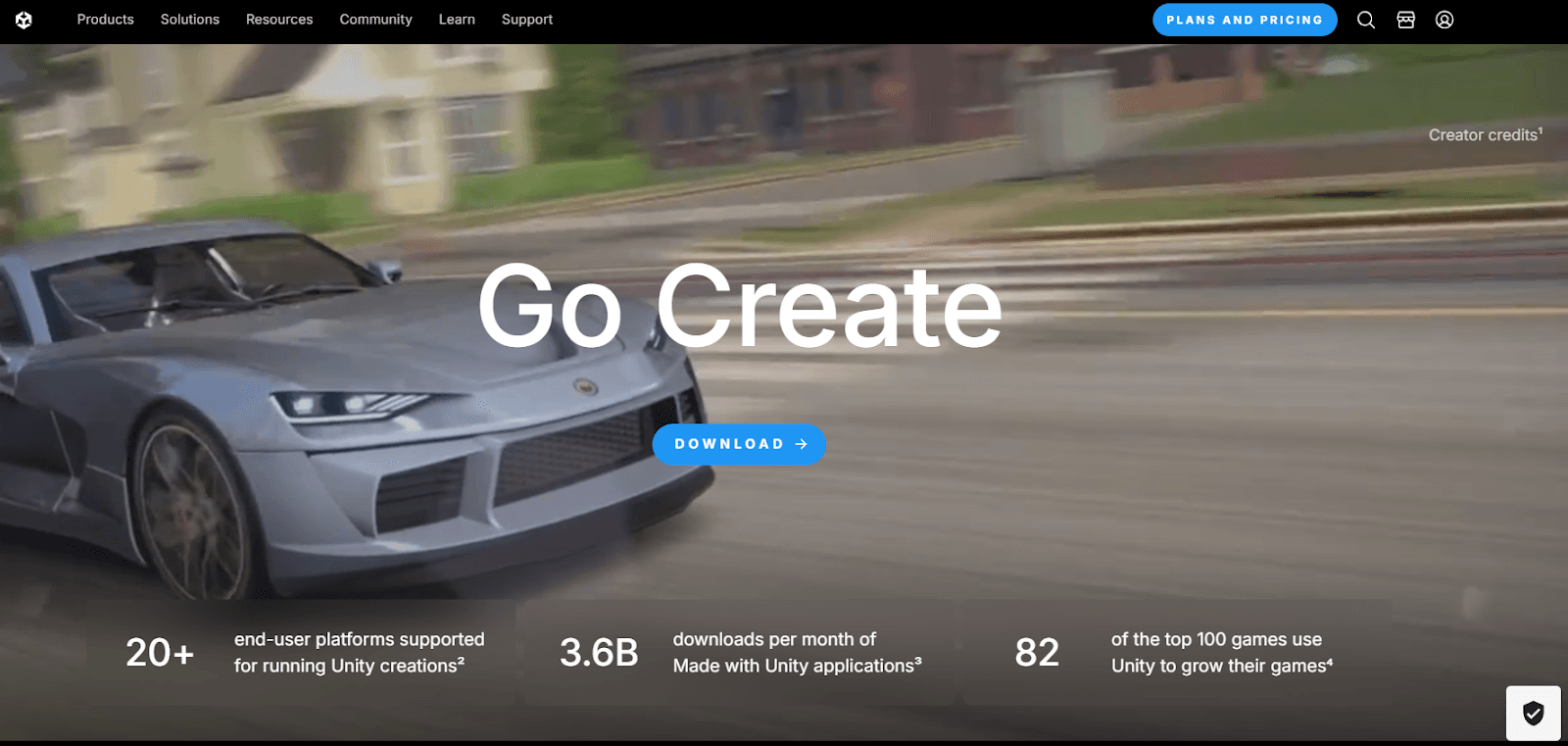
Unity Analytics is a native analytics solution tailored for Unity developers. It provides an end-to-end platform for collecting and analyzing player data, helping you better understand your game’s performance and audience behavior. You can optimize your game and deliver experiences that keep players returning by leveraging its real-time insights.
Key Features
Player Behavior Tracking: Gain deep insights into player actions, preferences, and engagement patterns to optimize game design and user experience.
Monetization Insights: Identify revenue-driving opportunities by analyzing spending behaviors and trends, enabling data-driven monetization strategies.
Custom Event Reporting: Track and analyze game-specific events with customizable reporting tools to measure the impact of in-game actions on key metrics.
Real-Time Dashboards: Access up-to-the-minute data visualizations and reports, empowering teams to make swift, informed decisions.
Pricing & Availability
Unity Analytics is free, but premium options are available for developers seeking advanced features and insights. Its native integration within Unity’s ecosystem makes it a convenient and efficient solution for game developers of all experience levels.
2. Google Analytics for Firebase
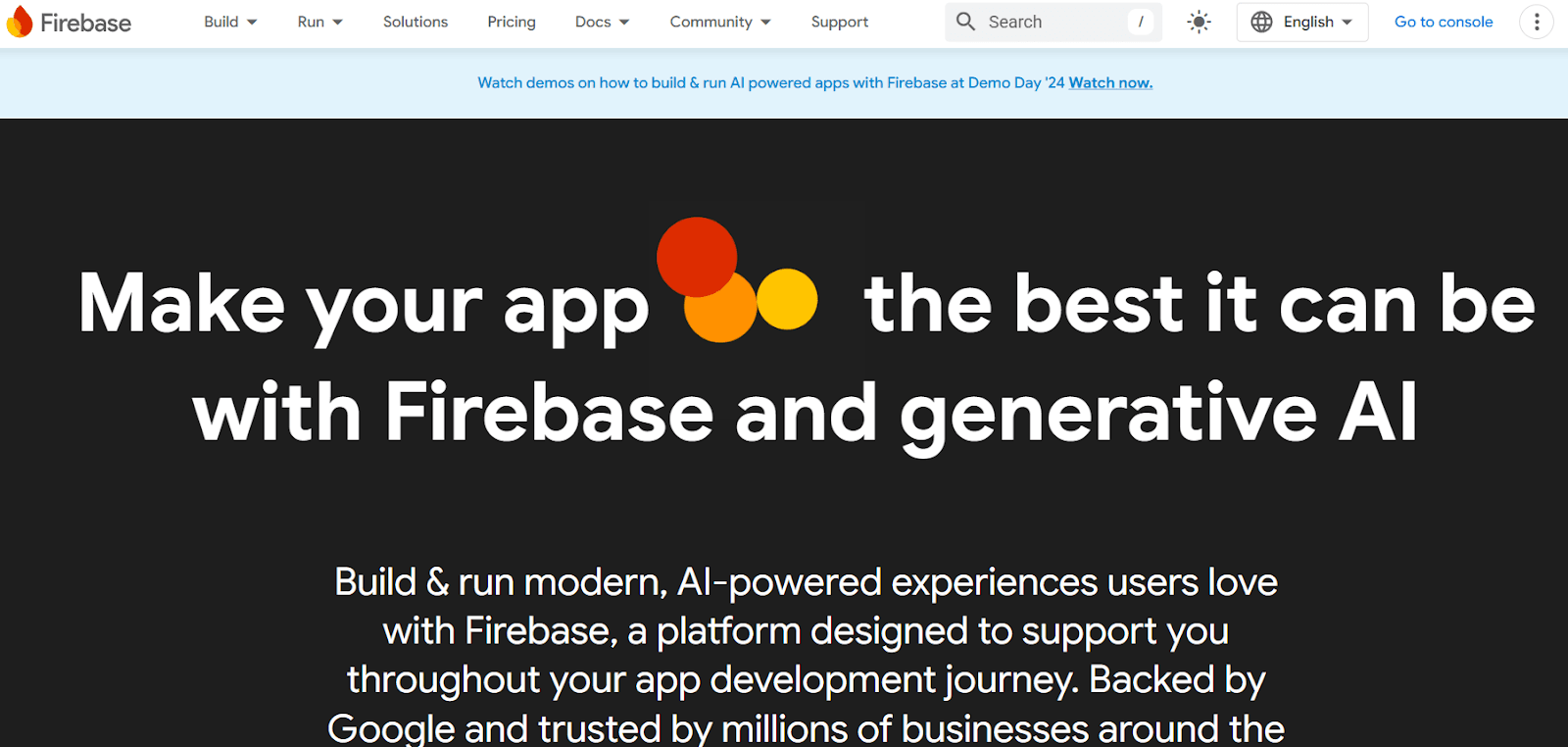
Google Analytics for Firebase is a robust game analytics tool aggregating user data and delivering actionable insights through a comprehensive dashboard. Its cross-platform support for iOS, Android, and Unity helps you track user behavior, segment audiences, and monitor real-time metrics—all in one place.
Key Features
Real-Time Data Insights: You will have instant access to up-to-date metrics and trends, enabling faster decision-making and immediate response to changes in player behavior.
Retention Reports: Analyze detailed retention metrics to identify patterns, optimize user experience, and maximize long-term player engagement.
Audience Segmentation: Unlock advanced segmentation tools to categorize users based on behavior, preferences, and demographics, ensuring tailored strategies for better results.
Custom Event Tracking: Track unique in-game events and interactions to measure impact, optimize gameplay, and drive meaningful engagement.
Pricing and Availability
Firebase offers flexible pricing plans:
Spark Plan: Free and ideal for basic analytics needs.
Blaze Plan: Pay-as-you-go with additional costs for storage and operational features, perfect for scaling projects.
3. GameAnalytics
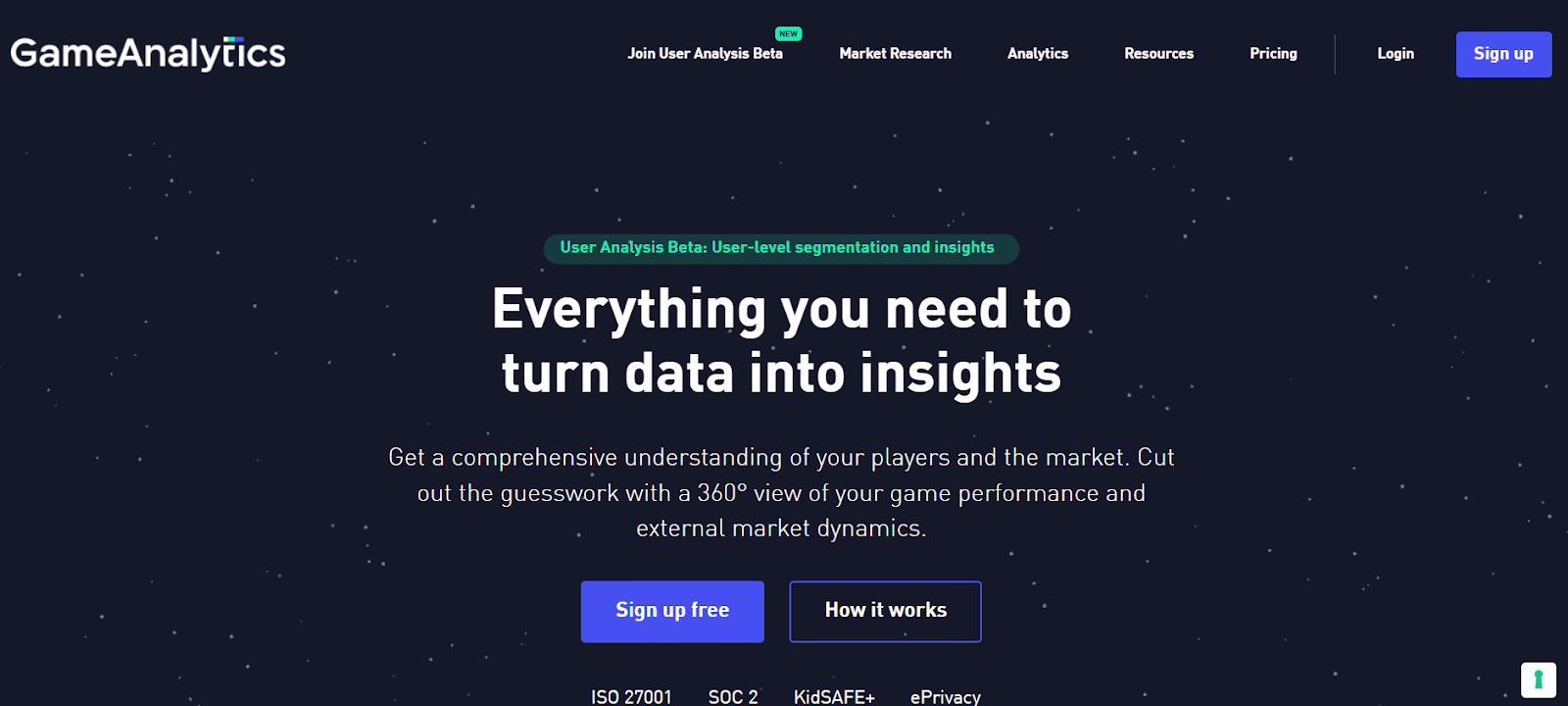
GameAnalytics is a dedicated game analytics tool that tracks player behavior and offers detailed insights into how players interact with your game. It helps you identify trends, improve player engagement, and refine monetization strategies to grow your game effectively.
Key Features
Player Behavior Tracking: Gain in-depth visibility into player actions and preferences to uncover patterns, improve engagement, and address pain points proactively.
Retention Analysis: To boost long-term retention, analyze trends, session lengths, and churn rates to understand what keeps players returning.
Monetization Insights: Look into revenue streams to identify high-performing strategies, optimize in-app purchases, and enhance ad placements for maximum profitability.
Custom Reporting and Dashboards: Create customized reports and dynamic dashboards that provide actionable insights, empowering teams to make data-driven decisions easily.
Pricing Options
GameAnalytics offers flexible pricing plans to suit developers at every stage:
Free Plan: Ideal for indie developers or small studios, this tier provides access to essential analytics features at no cost.
Pro Plan: Advanced features start at $299/month. However, if you sign up before January 31, 2025, you can lock in the early bird rate of just $99/month for two years—a 67% discount.
Indie Developer Program: For indie studios, all Pro features are available for $99/month, fixed for an entire year, to help you grow without financial strain.
Usage-Based Fees: The service includes 2 million Monthly Active Users (MAUs) for free. Beyond that, costs are $1.50 per 1,000 MAUs, reduced to $0.50 per 1,000 MAUs during the early bird offer.
If your game attracts over 5 million MAUs, GameAnalytics offers customized pricing to meet your unique needs.
4. Flurry Analytics
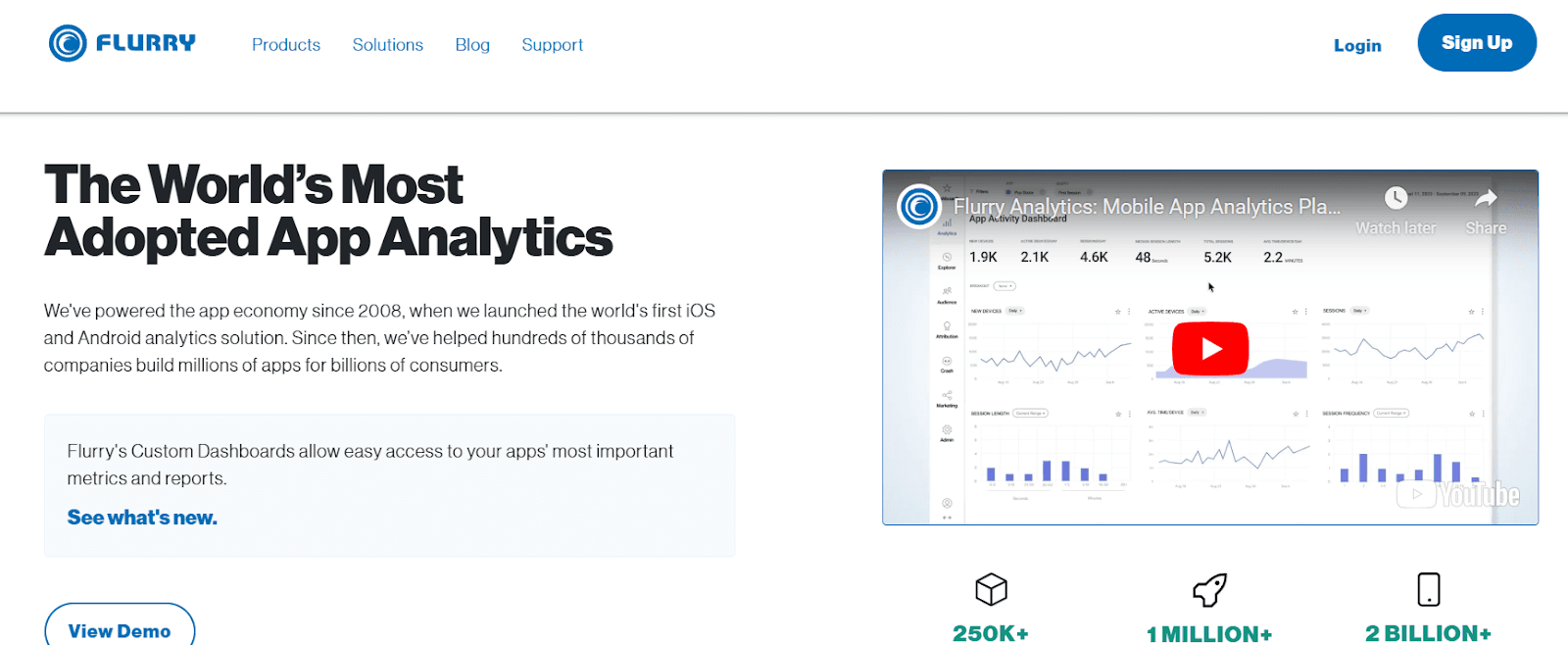
Flurry Analytics is a free tool that tracks in-app usage and performance metrics, making it a great option for game developers. It supports iOS and Android and provides detailed insights into user behavior, retention, and demographics, allowing you to optimize your game for better engagement and monetization.
Key Features
Real-Time Analytics: Monitor key metrics and campaign performance with live updates, enabling instant decision-making to optimize outcomes.
User Retention Tracking: Analyze user behavior and retention trends to identify pain points and opportunities, ensuring sustained engagement and growth.
Demographic Insights: Unlock detailed demographic data to tailor strategies for specific audience segments, enhancing personalization and effectiveness.
Cross-Platform Tracking: Seamlessly track user interactions across multiple platforms for a unified view of performance and user journey.
Pricing
Flurry Analytics is completely free to use. It collects and shares anonymous data with third parties, allowing developers to access its full suite of features without cost.
5. ByteBrew
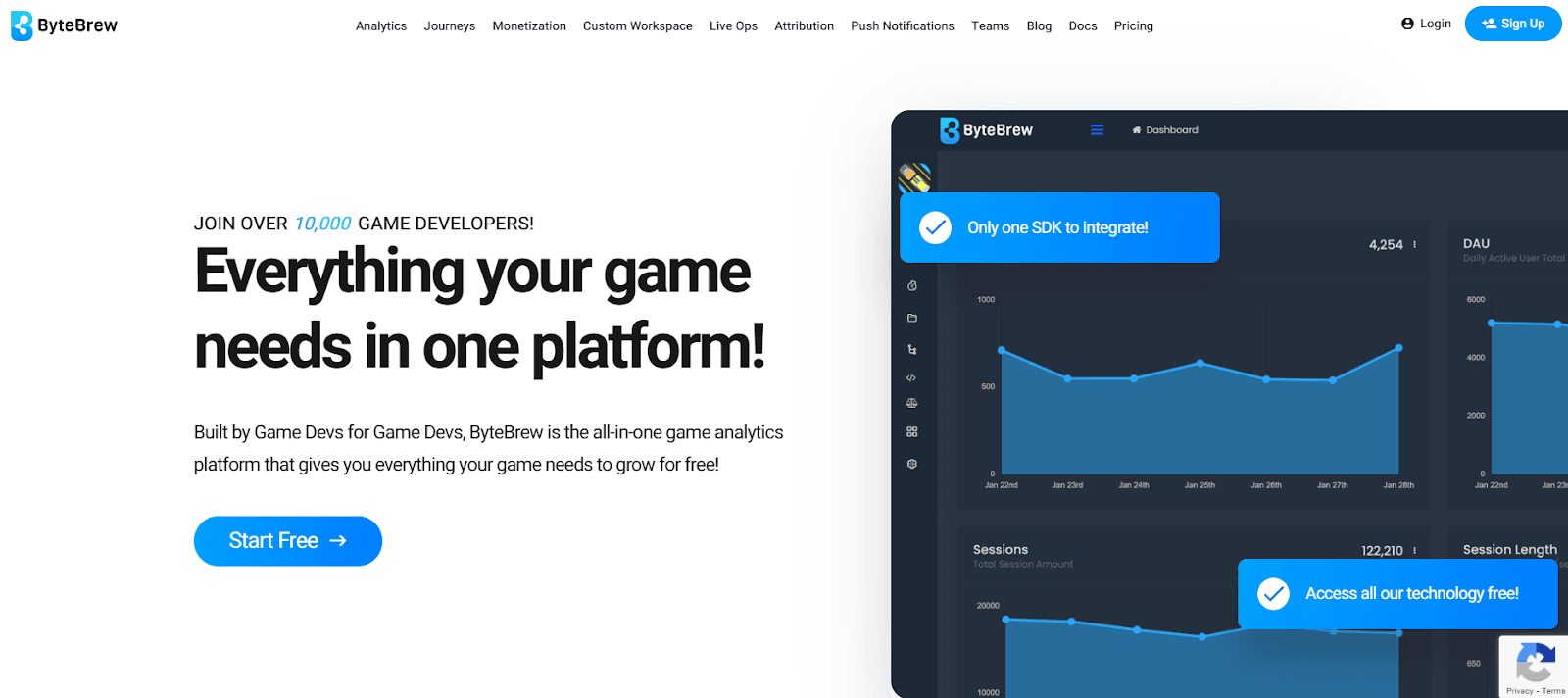
Are you looking for a way to grow your mobile games without breaking the bank? ByteBrew has you covered. It’s an all-in-one game analytics tool designed specifically for mobile game developers. From real-time player analytics to monetization tracking, ByteBrew offers everything you need to scale your games.
Key Features
Comprehensive Analytics: Track player behavior, retention, and progression with custom events and funnel tracking.
Monetization Insights: Analyze in-app purchases, ad revenue, LTV, and ROAS with fraud prevention.
Remote Config & A/B Testing: Adjust game settings remotely and optimize engagement with A/B testing.
Attribution Tracking: Analyze marketing performance with integrations and advanced SKAdNetwork settings.
Pricing
ByteBrew offers all of this for free, with no hidden costs or limitations. You get unlimited access to the tools you need to grow your mobile games.
Each tool offers distinct features, so selecting the right one depends on your requirements.
Important Game Analytics Metrics
Tracking the right metrics is key to using game analytics tools effectively.
Installs and Cost Per Install (CPI)
Installs measure how many players download and set up your game, forming the foundation for other key metrics. Cost Per Install (CPI) reflects the marketing spend required to acquire a new user. You can optimize campaigns, grow your audience, and maximize ROI by tracking installs and calculating CPI.
Daily Active Users (DAU) and Monthly Active Users (MAU)
Daily Active Users (DAU) measures the number of unique players interacting with your game daily, reflecting its stickiness and retention. Monthly Active Users (MAU) tracks unique players who engage within 30 days, indicating growth trends. Together, these metrics help gauge player loyalty and engagement, with the DAU/MAU ratio offering deeper insights into user behavior.
Session Length & App Load Time
Session length measures how long players stay engaged in a single gameplay, reflecting their interest and interaction. Longer sessions often signal highly engaged players. Similarly, app load time is critical; slow loading can lead to shorter sessions, higher drop-offs, and uninstalls. Monitoring both ensures smoother experiences and improved retention.
Drop-off Rates & Retention
Drop-off rates show where players lose interest and stop engaging, offering insights into weak points like unclear instructions or overly complex gameplay. Retention measures how many players return after their first launch, highlighting user experience quality. Tracking patterns over Days 1, 7, and 30 helps refine engagement strategies effectively.
Churn Rate
The churn rate shows the percentage of players who stop playing your game over time. It highlights player loss, often peaking within the first week. Day 7 is critical, as most churn happens by then. After Day 30, the churn rate stabilizes, revealing your most loyal players.
Tracking these metrics ensures your analytics tools deliver meaningful results. But with so many tools, how do you decide which is the best fit for your game? Let’s break it down.
Also Read: Importance of Game Analytics for the Growth of Mobile Games
Key Considerations for Selecting the Right Tool
Choosing the right tool for your mobile game involves more than just basic functionality. Incorporating features that address live operations, real-time monitoring, and revenue optimization can elevate your game’s performance and player experience.
Live Operations and Real-Time Monitoring
Integrating live operations and real-time monitoring ensures your game stays engaging, responsive, and glitch-free. Here's how:
Real-Time Issue Resolution: Address technical glitches and bugs instantly to provide a seamless experience for players. Quick resolutions maintain player trust and prevent frustration.
Monitoring Player Actions: Analyze real-time player behaviors to adapt gameplay features. This personalized approach keeps players invested and enhances retention.
Feedback-Driven Updates: Use player feedback to guide updates, aligning them with player expectations and improving satisfaction.
Real-time monitoring ensures your game stays responsive and engaging. However, strong revenue strategies are just as important for making your efforts sustainable.
Revenue Optimization Strategies
To ensure sustainability and growth, it's vital to leverage tools that help maximize your game’s revenue potential is vital. Key strategies include:
Analyzing Player Spending Habits: Understand how and where players spend money in your game. This insight will allow you to refine your monetization strategies for maximum effectiveness.
Enhancing Monetization Opportunities: Segment players to identify high-value groups and create targeted campaigns. Personalized offers can drive in-game purchases and increase ad revenue.
Tracking Revenue Metrics: Monitor critical metrics like Average Transaction Value (ATV), Average Revenue Per Daily Active User (ARPDAU), and Average Revenue Per Paying User (ARPPU) closely. These metrics reveal profitability trends and highlight areas for improvement.
Combining effective live operations with real-time monitoring and data-driven revenue strategies ensures your tool selection supports player satisfaction and financial success.
If you found this blog helpful, you might also want to check out Best Attribution Tools for Mobile Game Analytics to enhance your game's performance further.
Conclusion
Game analytics tools are essential to unlock your game’s full potential. They provide deep insights into player behavior, retention, monetization, and engagement, empowering you to make smarter, data-driven decisions.
By tracking essential metrics like retention rates, churn, in-app purchases, and ad performance, you can fine-tune your ad spend and create personalized experiences that keep players loyal.
If you’re looking to take your analytics a step further, Segwise has you covered. Our AI-powered tracking and proactive alerts keep you ahead of ad performance issues, helping you save costs and boost ROI with precision.
Start your 14-day trial with Segwise today and take your app’s monetization strategy to the next level!

Comments
Your comment has been submitted successfully!